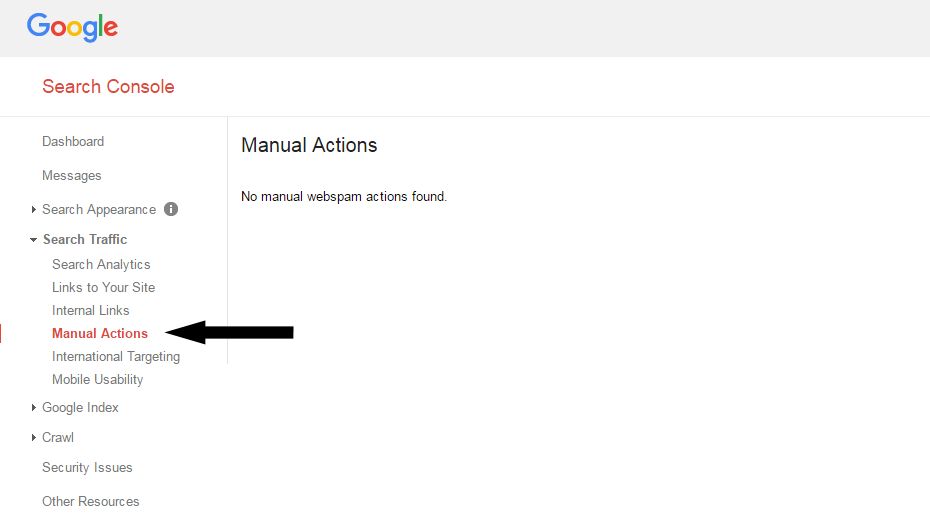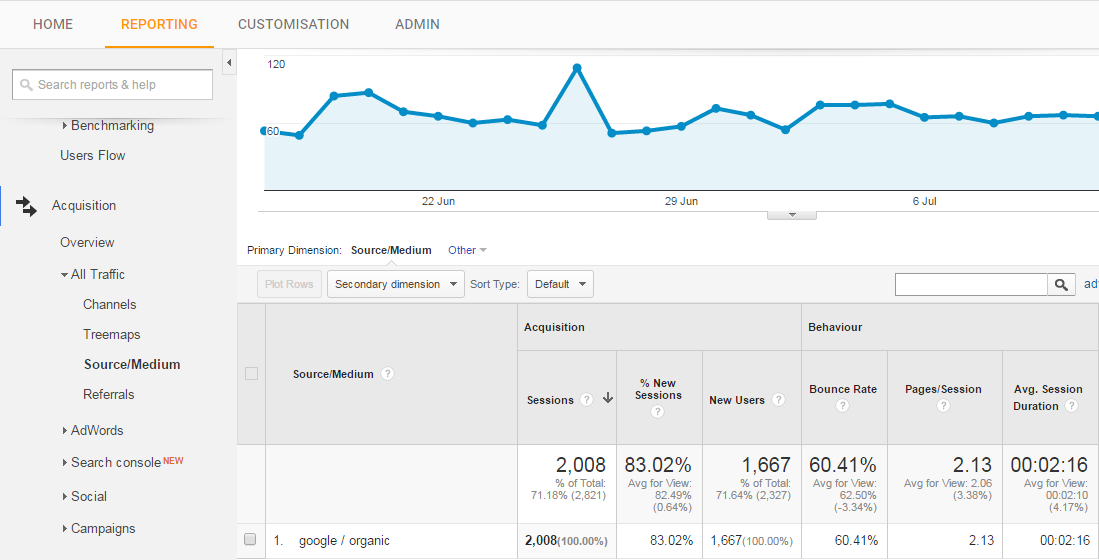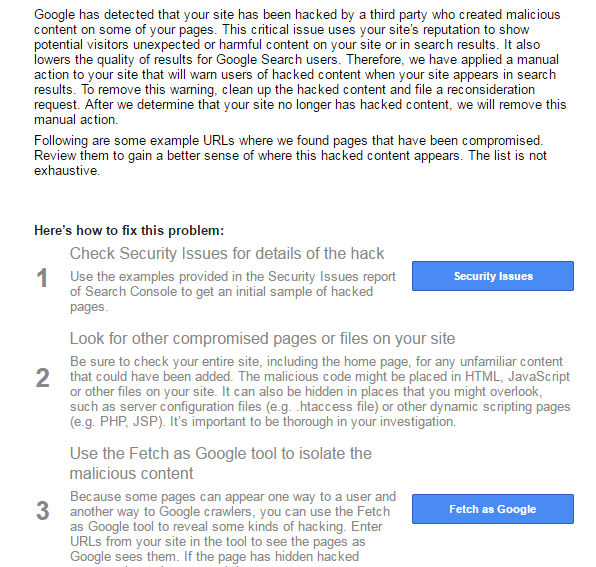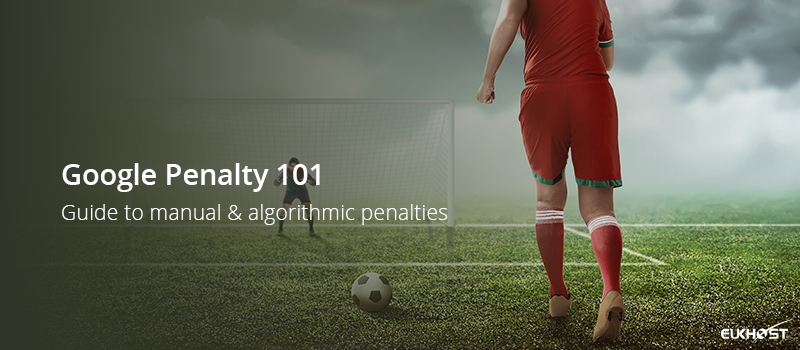Has your organic traffic dried up? If it has, it’s quite possible you’ve been hit with a Google penalty. And that’s a serious issue. Having a penalty means Google has a problem with your site, and until you rectify that problem, your site won’t be ranking in their search results. If you rely on organic traffic for your income, it could quickly put you out of business. So here’s how to identify if you have a Google penalty and what to do about it if you have.
What are Google Penalties?
- Manual Penalties
There are two types of Google penalty, manual and algorithmic. Manual penalties, or manual actions, are those which have been given to your website by a human being. These are given when someone at Google investigates your website and finds an issue. There are many reasons why you can be given a manual penalty; usually these are because your site does not comply with the Google Webmaster Guidelines. When you receive a manual penalty, those who have a Google Search Console account will receive a message telling them: why a penalty has been given, what they need to do to rectify it and how to get the penalty removed. - Algorithmic penalties
An algorithmic penalty occurs when Google makes changes to the way it provides search results. When someone searches Google it uses a highly complicated mathematical formula, called an algorithm, to find the best results. From time to time, to improve the quality of its results, it changes that algorithm. When it does, some sites see their rankings go up whilst others see their rankings go down. If Google has been trying to weed out certain types of sites, as it did with its famous Panda, Penguin and Hummingbird updates, those sites can disappear from the results completely. These sites are those which have received an algorithmic penalty. Again, the main reason for this is because the sites fail to comply with the Google Webmaster Guidelines. The difficulty for webmasters, however, is that unlike manual penalties, Google doesn’t inform you that you have an algorithmic penalty, so you have to work out for yourself what the problem is before you can put it right.
How to find out if you have a manual Penalty
Step 1: Login to Google Search Console.
All website owners should have a Search Console (formerly Webmaster Tools) account as it is the channel Google uses to communicate with them about issues on their site.
Step 2: On the left-hand menu, click on Search Traffic to expand the menu, then click on Manual Actions.
If you don’t have a penalty, a message will be displayed saying, No manual webspam actions found. If you do have a penalty, the pertinent information will display in this section.

Read the information carefully to help you fix any issues before asking Google to review your site.
How to find if you have an algorithmic penalty
The obvious clue that you have an algorithmic penalty is that your organic traffic has significantly dropped. Organic traffic is that which comes from search engines. It does not include visitors who have typed in your website address (direct traffic) or clicked links from adverts, social media or elsewhere (referral traffic). It is also possible that whilst you may have been penalised by Google, your site might still be ranking on other search engines.
The way to find out if your organic traffic has been affected is to check your traffic data in Google Analytics. To do this:
Step 1: Login to Google Analytics
Step 2: In the left-hand menu, navigate to Acquisition > All Traffic > Source > Medium
Step 3: Under the graph which appears in the main part of the page, click Google / Organic
Step 4: At the top of the page, change the time duration so that you can look back over a sufficiently long enough time to see when problems began occurring.

If you have an algorithmic penalty, you would find that at some point your organic traffic from Google will have dramatically decreased. Because of the way Google implements algorithm changes, this may not necessarily be a clean cut stoppage of traffic, it may look more like a tailing off over a few weeks.
What to do if you have a manual penalty
If you have a manual penalty, in some sense you are lucky, because Google will explain the steps you need to take to rectify the problem before you can apply for a review. Below is an example of a site that had been hacked and given a manual penalty because the hacker had created malicious content on the site.

 What to do if you have an algorithmic penalty
There are two possible things which can cause an algorithmic penalty. Either Google changes its algorithm and your site no longer meets the criteria to rank well, or you change your website so that it no longer meets the standards required by the existing algorithm.
To figure out which of these is the cause, you need to look very closely at the date on which organic traffic began to significantly decline. If your traffic drop coincides with the rollout of an algorithm update, then that is likely to be the cause of your problem. If it isn’t, you may need to look at your website logs for the dates in question and see if you have made any changes to your website around this time which might have caused problems.
Do remember, that in many cases, what people think might be a Google penalty often turns out to be something quite different you may, for example, have accidentally prevented Google accessing your site by changing your robotx.txt file. As a result, it could stop indexing your site. These things also need to be checked.
If your think your drop in ranking is most likely to be a result of a change in the Google algorithm, the first thing you should do is see what changes were made around the time your traffic stopped. You can do this by visiting the Moz Google Algorithm Change History page.
From reading Moz and other SEO related sites, you can quickly learn how the Google algorithm has changed, how sites have been affected and what you can do to put things right.
Once you have rectified the problems, you may find your site rises in ranking automatically, though this may take time and you may not fully recover. If it doesn’t, you should apply to Google and ask them to reconsider your status.
Common problems
Previous changes to the Google algorithm continue to cause problems for many websites and here are some you should remain aware of:
- Spammy links to your website If you have bought or exchanged links, or done too much guest posting or comment making in order to get backlinks to your site, Google will see this as a form of malpractice. You should only have organic links, preferably from reputable sites in a related niche.
If you have too many bad links, ask the site owners to remove them or nofollow them. If they don’t, use the Google disavow tool to tell Google to ignore them.
- Spammy links from your website The opposite is also true, if you’ve been selling links or have too many affiliate links, you need to remove them or nofollow them.
- Poor content If your website does not offer a valuable user experience, then it will cease to rank. You need high-quality content that is detailed and which is liked and shared by readers and linked to high authority sites. Check your analytics for session length, pages visited per session, and bounce rates as these will give an indication of how useful visitors think your site is.
- Duplicate content Whether it is a word-for-word copy or a rehash of another website’s content, if it’s not original, your content won’t rank highly. Do check, from time to time, to see if other websites have scraped your content it happens.
Conclusion
From reading this article you will now have a better understanding of what a Google penalty is, how it can affect your ranking, and how to find out if you have a penalty. You should know the difference between a manual penalty and an algorithmic penalty and know how to find out the causes of each. In addition, you will have a clearer idea of how to start improving your website in order that any penalty you have can be revoked.
If you run a website and are looking for secure, affordable and flexible packages, guaranteed uptime and first rate customer service, check out our cPanel hosting packages.



